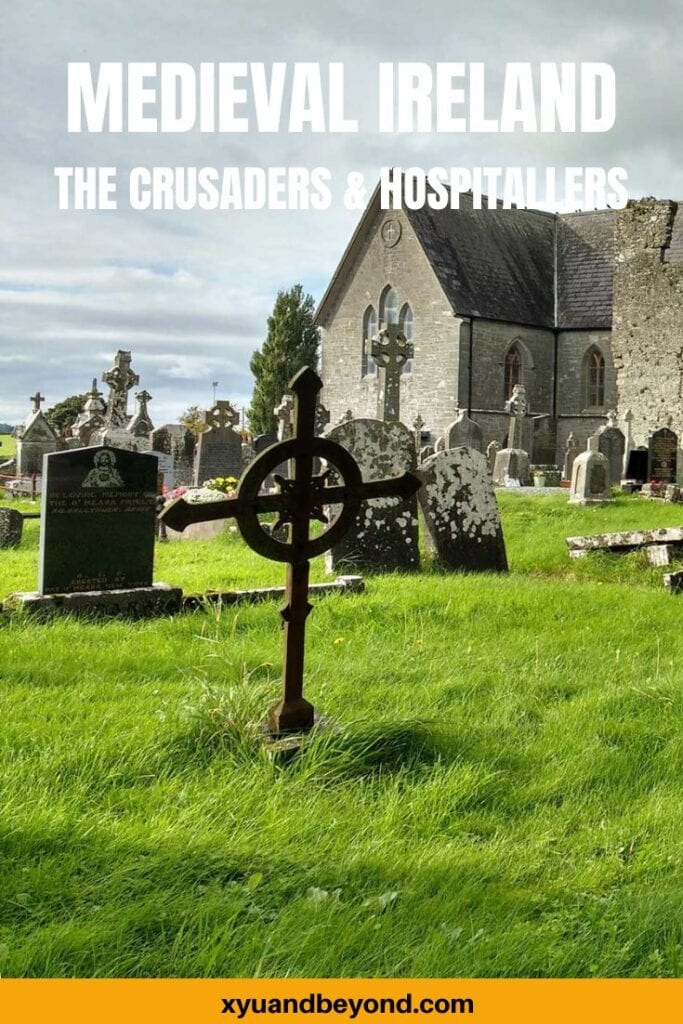Medieval Ireland – the Crusaders in Limerick
In Medieval Ireland, there were two military orders the Knights Hospitaller and the Knights Templar. Both of these orders were part of the crusades to ‘protect’ Jerusalem and the Christian faith.
The Templars and Hospitallers came to Ireland with the Norman invasion. The Knights Hospitallers were first established at Wexford around 1172 and the Grand Priory at Kilmainham was established in Dublin around 1174 by Strongbow.

The Templars were forbidden to kill other Christians in Ireland except in self-defence so they began recruiting Knights to go to the Holy Land and they were tasked with ensuring the Irish taxes were paid and sent to England.
The Order first arrived in Ireland in 1171 with the Norman invasion and it swiftly established preceptories in Wexford and Waterford. By 1174, the Order’s Irish headquarters, the Priory of Ireland and Hospital of St John were based at Kilmainham in Dublin.
Its second great hospital was the Preceptory of Áine in County Limerick, from which the town of Hospital takes its name. Within a few years, the Order had founded over 129 centres including lazar-houses (for the care of lepers), in Counties Kilkenny, Carlow, Tipperary, Cork, Limerick, Kerry, Kildare, Meath, Louth and Down.
Many of the Irish priors were quite colourful characters, including Roger Utlagh (Outlawe), who had opposed the English-born Bishop Richard de Ledrede’s infamous witch trial of Alice Kyteler in Kilkenny in 1324.
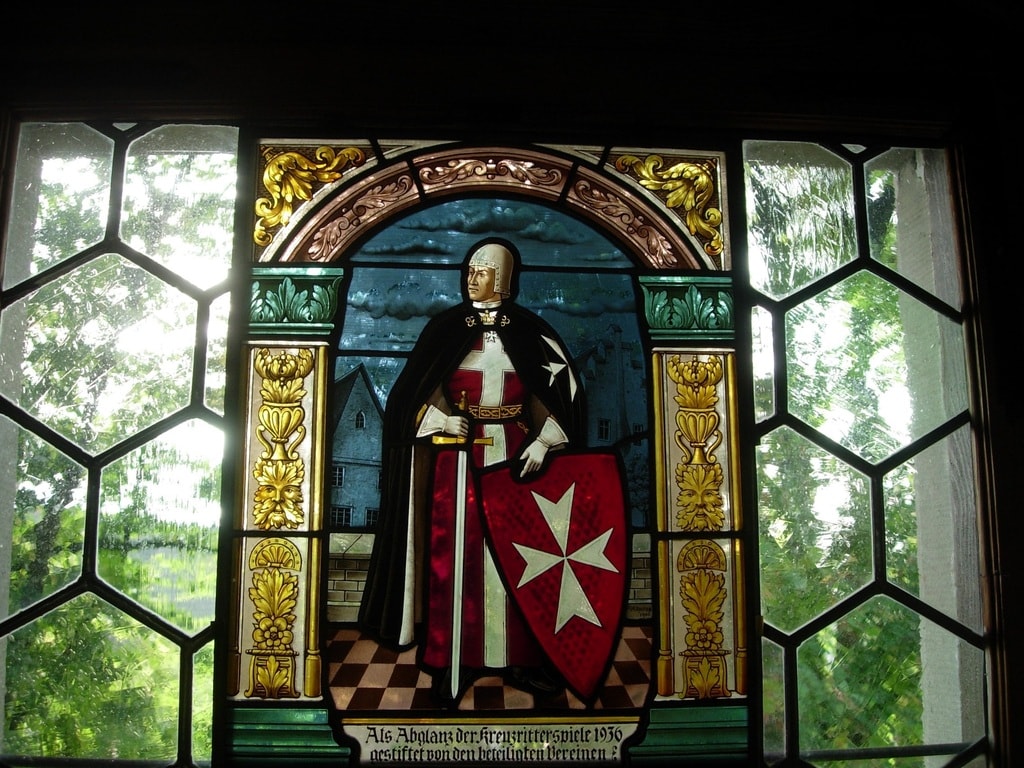
Planning a dream trip to Ireland? Everything you need to know
The Knights Hospitallers in Ireland
The Hospitallers spread relatively rapidly in Ireland around the same time as the Templars and their recruited Knights had to have proof of nobility, 2 horses and travel on call. In addition, they paid a large fee to be part of the order and all their property and possessions were to be left to the order when they died.
In Ireland, their primary duty was to provide hospitality to pilgrims and travellers. Due to the ‘troublesome’ nature of the Irish people after the Norman invasion, the preceptories often became military outposts in places like Killybegs and Kilteel in Kildare.
What’s a preceptory?
An administrative centre for the order of monastic knights serves as an administrative centre for the estates and a centre for medical care for those that are ill.

In 1307, King Philip IV of France and Pope Clement V combined to take down the Knights Templar, arresting the grand master, Jacques de Molay, on charges of heresy, sacrilege and Satanism. Under torture, Molay and other leading Templars confessed and were eventually burned at the stake. In medieval Ireland, Clement closed the Templars down in 1308.
Pope Clement V transferred over the Knights Templar holdings to the Knights Hospitaller and they took over the lands and the income. In 1381 the Peasant’s Revolt took place in England and historians believe that this influenced the rebels in Ireland.
Around that time the English rebel leaders vandalized Hospitallers properties in England and set fire to the remains. Not only did they deliberately go after Hospitaller’s properties the Prior of the Hospitallers was dragged from the Tower of London with the Archbishop of Canterbury and had their heads struck off and placed on London Bridge. One captured rebel leader, when asked the reasons for the revolt, said, ‘First, and above all…the destruction of the Hospitallers.’

A few centuries later at the time of the Reformation in the mid-1500’s, the Hospitallers were disbanded and the lands, churches and priories were given over to the Crown. In the Tudor period, the Hospitallers attempted to reclaim their lands and monies from Queen Elizabeth but were denied.
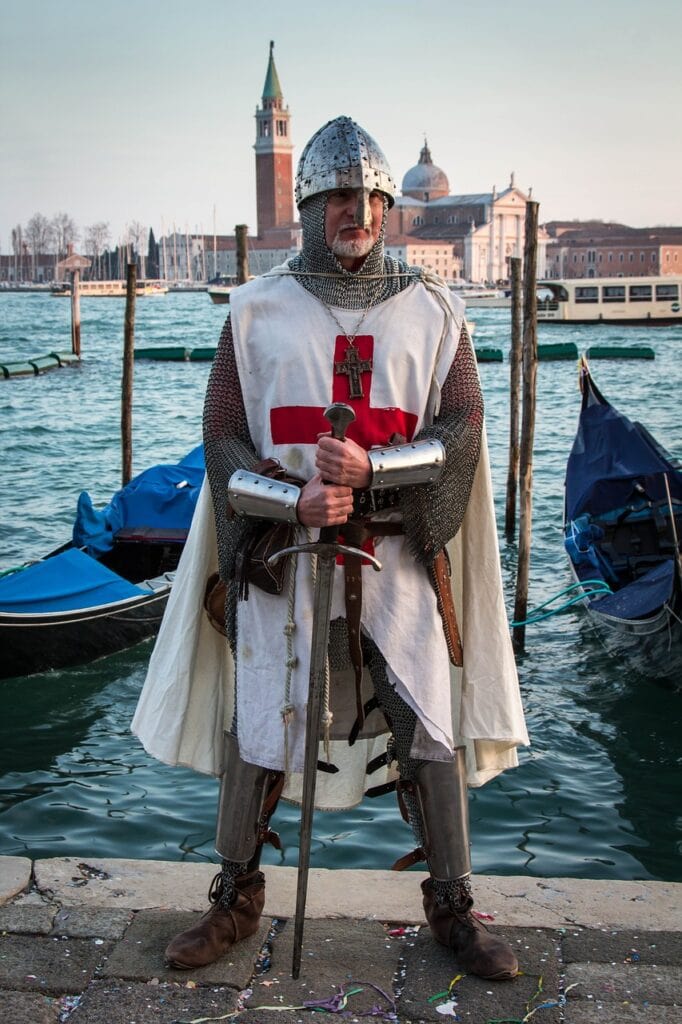
Hospital in Limerick
Hospital (An tOspidéal in Irish) is a town in east County Limerick, Ireland. Hospital lies on the River Mahore in East Limerick and contains the ruins of the medieval fortified church of the Knights Hospitaller and is a national monument in these parts of Ireland.
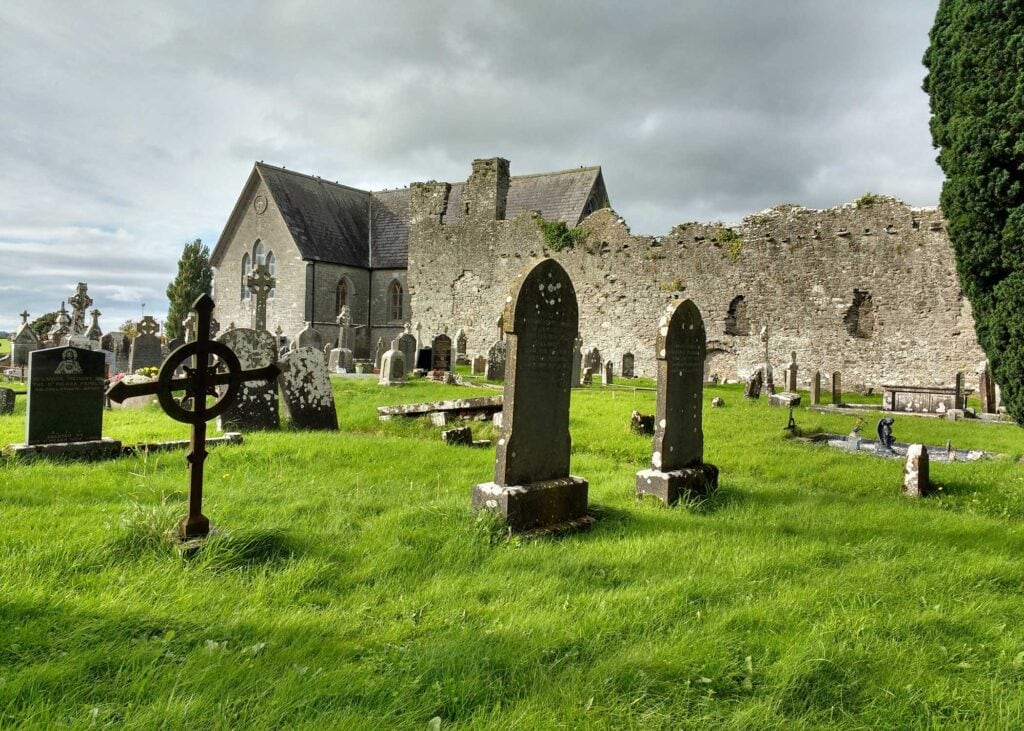
There are two theories as to how the town got its name. The first is from the crusading Knights who built the archaeologically significant Hospital Church before 1215. This church has the remains of three interesting medieval tombs, dating from the 13th and 14th centuries.
The second theory is that the town derived its name from a hospital for Knights Templar, founded in 1226 by Geoffrey de Marisco, then Lord-Justice of Ireland.
Geoffrey de Marisco, then Lord-Justice of Ireland ruled over a relatively peaceful Ireland at the time and is believed to be the impetus to build Hospital town.
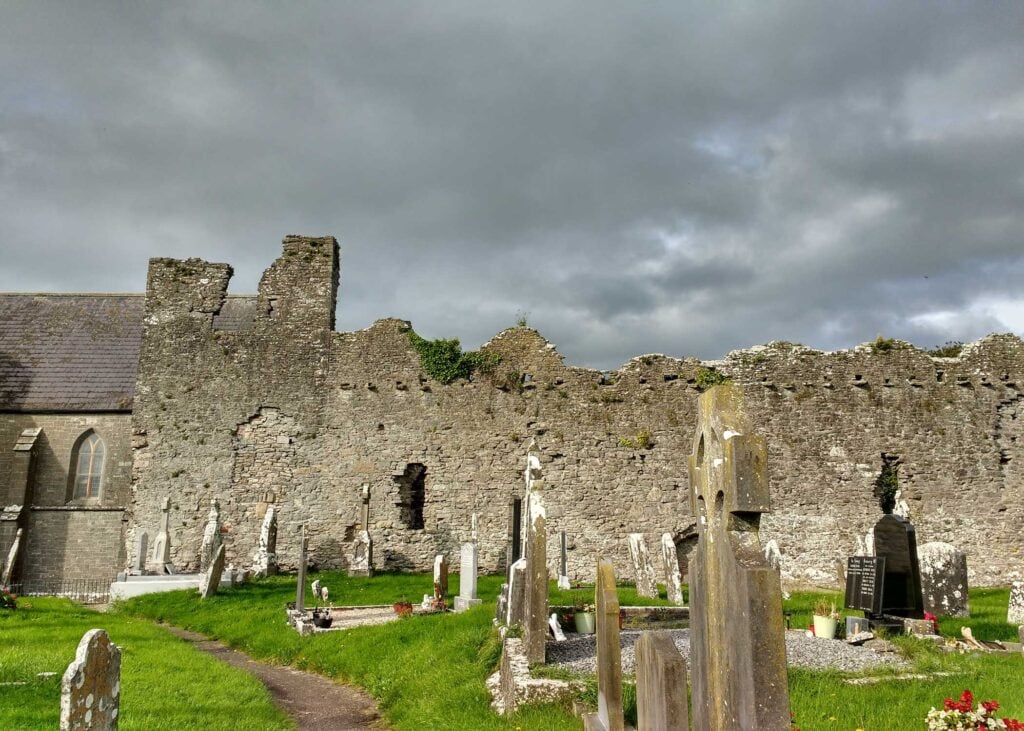
Under Geoffrey, Hospital increased its wealth through grants of land, farms, castles, mills, fisheries and villages. A document from 1349, tells of a man named Meyler who, in return for donations to the preceptory in Hospital, was permitted to live there for the remainder of his life.
He was allowed entertainment for himself during his life, and for a chamberlain, a servant, and two horses, in this house; and if he should be confined to his chamber, then he should have the daily allowance of three white loaves and one of the coarser kind, three flagons of the best ale and one of the second kind, with sufficiency from the kitchen.’

The Hospital Church was built for defence and is fortified. Hospital Church has a prominent base of large stones and high narrow arched windows. A tower sits at the west end of the Church with a partial barrel vault left on the second floor.
On the west wall is a medieval carving of the crucifixion and on the interior of the east wall are two medieval tombs, which appear to depict a Knight and his wife it is believed that they might be of Geoffrey de Marisco.
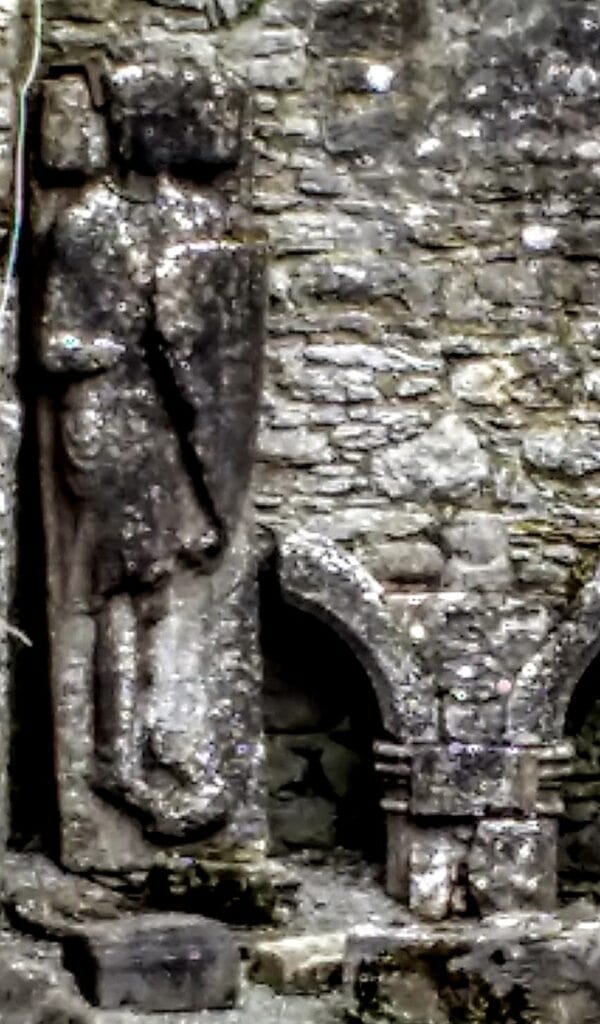
There are stairs up the side of the Church ruin that lead to a small grotto dedicated to Mary. You can view the interior of the church from this viewing platform where you can see the two effigies at the end wall.
One is a Knight holding a shield, his head is on a pillow and there is a dog or hound by his feet. This probably was the top slab of a tomb which no longer exists.
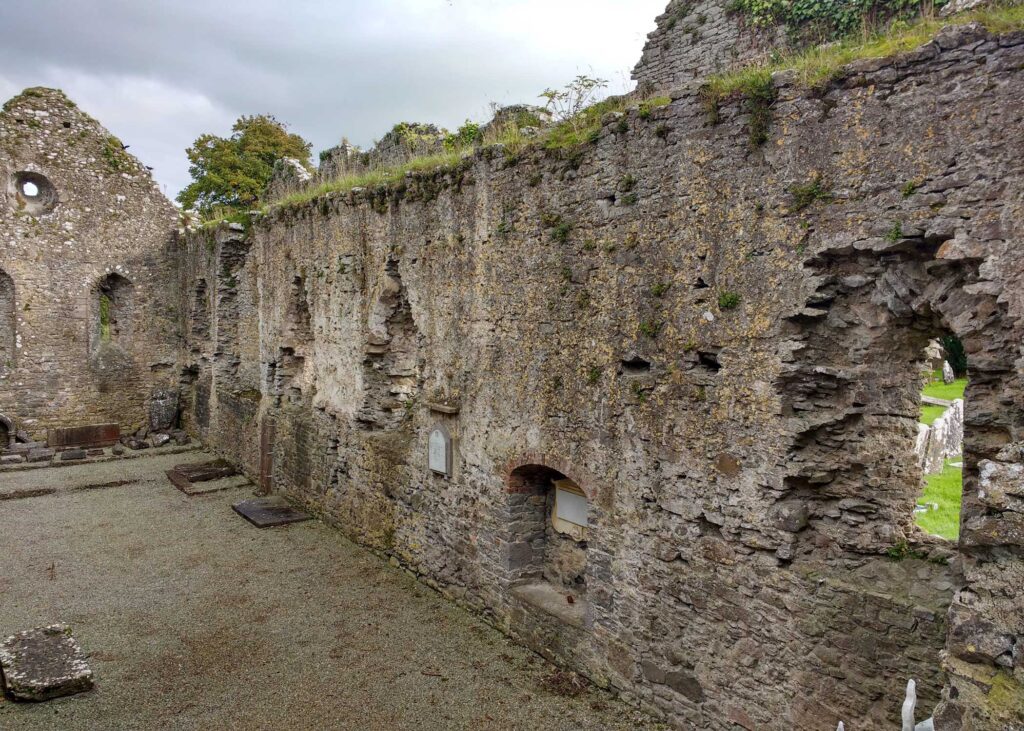
There is a second slab that shows a robed, bare-headed figure which many believe to be a monk holding a sword, there is some doubt because others believe it is of a woman (you cannot enter the Hospital Church to see the slabs close up) and a third slab that is believed to be that of the Knights wife Matilda.

The Reformation brought about the demise of this preceptory in 1541, by which time it had a watermill, twelve cottages, 17 rectories, a priory and other religious buildings. Only the ruins of the abbey have survived.
The ruins of the Hospital Church are free to the public and there is parking in the Church lot beside the ruins. You should also check out the stone circle nearby at Ballinamona.
And this is why you should rent a car in Ireland and occasionally get lost and explore these historic sites like Hospitaller that are really the hidden gems of Ireland.
You might also like
Fethard – Ancient Walls and Sheela na Gigs in Tipperary
Ancient Ireland 30 sacred places
Best tips for Visiting the Limerick Milk Market in Ireland
Ireland’s Ancient East – an epic road trip
Mellifont Abbey and the legend of Ireland’s Helen of Troy
Visiting Jerpoint Abbey Kilkenny
Medieval Ireland – the Crusaders in Limerick
101 Landmarks in Ireland to see
Grey Abbey an evocative ruin in County Down Ireland
Pin it to save it
